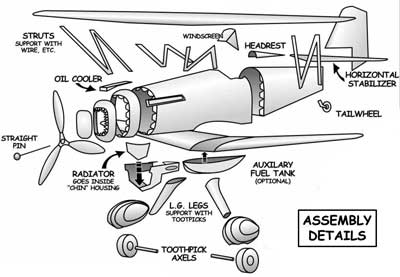

Curtiss P6E Hawk
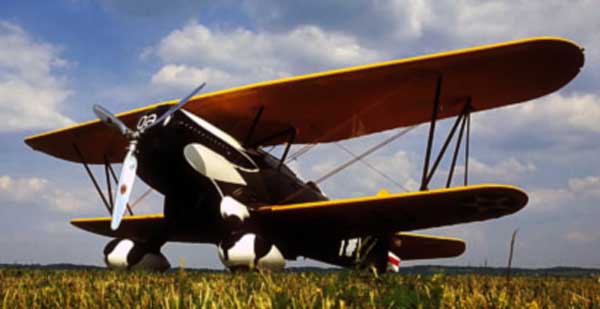

Curtiss's P-6E Hawk was the last in a long line of biplane fighters to be delivered to the USAAC. Powered by a 600hp Curtiss inline engine, it was capable of almost 200mph, with a service ceiling of just under 25,000ft -- fairly respectable for 1931 and '32. The model shown in these photos represents a P-6E of the 17th Squadron of the 1st Pursuit Group during the time it was based at Selfridge Field in Michigan. The model was designed by Chauncy Green for Fiddlers Green.
During construction, rubber O-rings were used for all three of the tires. K&S aluminum tubing was used for the propeller shaft to allow for a spinning prop. Florist's wire was used to strengthen the wing struts, which were glued in place with cyanoacrylate (CYA) "instant" glue.
Curtiss P-6E Hawk Downloadable Cardmodel from Fiddlersgreen
The P-6E, a first-line pursuit aircraft of the early 1930s, was the last of the fighter biplanes built in quantity for the Army Air Corps. Originally designated the Y1P-22, it was later redesignated the P-6E because of the similarity to the other P-6 series airplanes. Although it was never used in combat, it is remembered as one of the most beautiful biplanes ever built. Despite its excellent performance, only 46 P-6Es were ordered because of the shortage of funds for the Air Corps during the austere days of the depression.


This P-6E appears in the colors and markings of the airplane assigned in 1933 to Captain Ross G. Hoyt, Commanding Officer of the 17th Pursuit Squadron, 1st Pursuit Group, based at Selfridge Field, Michigan. As far as is known, it is the only original P-6E still in existence. It was donated by Mr. Edward S. Perkins of Anniston, Alabama, and restored by the Department of Aviation Technology, Purdue University in 1963.
 The P-6E was one
of the last of the fighter biplanes built in quantity for the
Army Air Corps. Originally designated the Y1P-22, it was redesignated
P-6E because of its similarity to other P-6 series airplanes.
Although it was never used in combat, it is remembered as one
of the most beautiful biplanes ever built. Despite its excellent
performance, only 46 P-6Es were ordered because of the shortage
of funds for the Air Corps during the austere days of the Depression.
The P-6E was one
of the last of the fighter biplanes built in quantity for the
Army Air Corps. Originally designated the Y1P-22, it was redesignated
P-6E because of its similarity to other P-6 series airplanes.
Although it was never used in combat, it is remembered as one
of the most beautiful biplanes ever built. Despite its excellent
performance, only 46 P-6Es were ordered because of the shortage
of funds for the Air Corps during the austere days of the Depression.
The P-6E at the USAF Museum appears in the colors and markings of the airplane assigned in 1933 to Captain Ross G. Hoyt, Commanding Officer of the 17th Pursuit Squadron, 1st Pursuit Group, based at Selfridge Field, Michigan. It was restored by the Department of Aviation Technology of Purdue University in 1963.
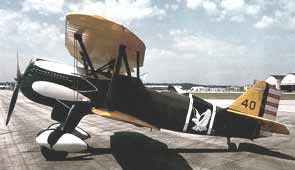 Curtiss's P-6E Hawk was the last in a long line of biplane fighters
to be delivered to the USAAC. Powered by a 600hp Curtiss inline
engine, it was capable of almost 200mph, with a service ceiling
of just under 25,000ft -- fairly respectable for 1931 and '32.
The model shown in these photos represents a P-6E of the 17th
Squadron of the 1st Pursuit Group during the time it was based
at Selfridge Field in Michigan.
Curtiss's P-6E Hawk was the last in a long line of biplane fighters
to be delivered to the USAAC. Powered by a 600hp Curtiss inline
engine, it was capable of almost 200mph, with a service ceiling
of just under 25,000ft -- fairly respectable for 1931 and '32.
The model shown in these photos represents a P-6E of the 17th
Squadron of the 1st Pursuit Group during the time it was based
at Selfridge Field in Michigan.
During construction, rubber O-rings were used for all three of the tires. K&S aluminum tubing was used for the propeller shaft to allow for a spinning prop. Florist's wire was used to strengthen the wing struts, which were glued in place with cyanoacrylate (CYA) "instant" glue.

Specifications for the Curtiss P-6E Hawk
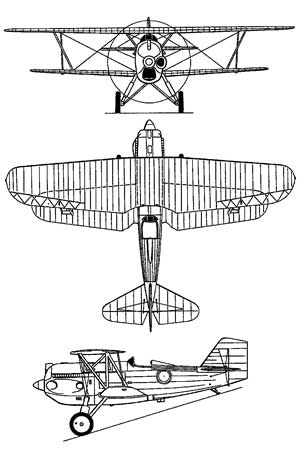 |
Length: 25 ft 2 in Wingspan: 31 ft 6 in Height: 8 ft 10 in Wing area: 252 ft² Empty weight: 2,669 lb Max takeoff weight: 3,436 lb Powerplant: 1× Curtiss V-1570C Conqueror liquid-cooled V12 engine, 700 hp Performance Maximum speed: 204 mph Cruise speed: 167 mph Range: 285 mi Service ceiling: 24,700 ft Rate of climb: 2.480 ft/min Armament 2 × .30 in (7.62 mm) machine guns |
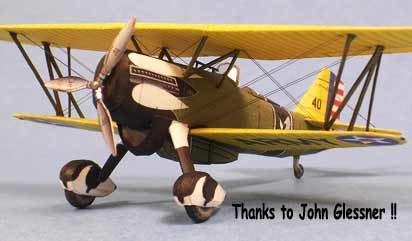 |
Relive the golden age of biplanes with the Curtiss P-6E Hawk, a Depression-era USAAC fighter with a 700 hp Conqueror engine, 204 mph top speed, and elegant design that served pursuit groups until the early 1940s—often hailed as one of the most beautiful biplanes ever. Priced at $6.95 and designed by Chauncy Green, the paper model captures the 17th Squadron's 1933 markings with options for spinning props using aluminum tubing and wire struts, great for display or educational builds.




